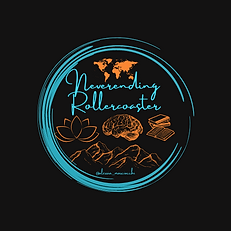forest bathing
- Alessia Masciocchi
- Dec 24, 2024
- 2 min read
Hi beauties!
This post opens the new category on forest bathing. I hope you'll enjoy it and it will give you lots of food to think about. Why not? Maybe it will bring you closer to this fantastic practice.

Let's Start with the Basics of Forest Bathing
The term "Shinrin-yoku" (森林浴 /ˈʃinrin joːku/) is composed of:
Shin (森): Forest
Rin (林): Woods
Yoku (浴): Bath/Immersion
We are facing a definition that perfectly captures the essence of the experience: a total immersion in the forest ecosystem, which refers to the holistic conception of health typical of Japanese culture.
This practice was born in Japan in 1982 through the initiative of Dr Tomohide Akiyama. This health approach is an interesting convergence point between preventive medicine and environmental connection, which quickly captured the attention of the international scientific community.
The Origins of an Innovative Practice
It all started with the promotion of this methodology by the Japanese Ministry of Agriculture, with a dual objective: on the one hand, to protect the national forest heritage (already vast as it covered and still covers a large part of the territory), and on the other, to propose a new model of psychophysical well-being.
The second objective is not about an environmental strategy but a scientific approach to health (both physical and mental) that roots itself in Japanese culture and moves away from Western medicine.
Theoretical and Scientific Foundations
Forest Bathing distinguishes itself from other nature or hiking practices by the core principles on which it is based:
Conscious Sensory Immersion
Do not think of a traditional physical activity; we must, above all, activate all of our senses to achieve a multisensory exploration.
Some examples?
Observing microscopic landscape details, from leaf veins to bark textures;
Listening to natural sound frequencies, from the rustling of foliage to bird songs;
Perceiving microclimatic variations, from temperature gradients to air currents;
Capturing the chemical stimuli of the forest environment, including aerosols and volatile organic compounds.
In-Depth Biological Mechanisms
Many people experience benefits from Forest Bathing, but this practice is not based solely on user perception: it is in fact supported by numerous scientific studies that have identified specific benefits such as:
Significant reduction of inflammatory markers
Modulation of the parasympathetic nervous system
Increase in immune defences through exposure to phytoncides (substances emitted by trees)
Regulation of cortisol levels
Improvement of heart rate variability
Conclusions
We can therefore say that Forest Bathing is an innovative scientific approach that places at the centre of its practice the holistic connection between human beings and the natural environment, going beyond mere physical activity and/or well-being.
Be careful! This is not an esoteric practice or a passing trend. We are dealing with a rigorous prevention method in the field of health.
Research is still ongoing, and new frontiers often open up, showing great promise in revealing an ever-increasing number of details about this wonderful practice's biological and psychological mechanisms.
I hope this post has sparked at least a minimal interest in this practice: there are still many things to say, but all in good time!

Comentários